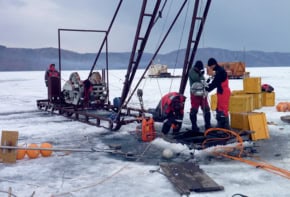A synchrotron that can accelerate neutral -- rather than charged -- particles has been unveiled by physicists in Germany. The device opens up the possibility of colliding neutral molecules at temperatures close to absolute zero, where molecules behave less like particles and more like waves (Nature Physics doi:10.1038/nphys513).

charge
Synchrotrons are large circular devices in which particles – usually electrons – are made to travel near the speed of light round a ring using a combination of electric and magnetic fields. Since the first charged-particle synchrotrons were constructed in the 1940s, physicists have toyed with the idea of a neutral-particle synchrotron. In principle, “polar” molecules, which have a small electric dipole, could be accelerated in a synchrotron using a large electric field that switches at high speed. Unfortunately, the technology to do so was not available, and idea lay dormant.
Cynthia Heiner and physicists from the Fritz-Haber-Institut der Max-Plack-Gesellschaft in Germany have now overcome these difficulties and built a working neutral-particle synchrotron. Their device, which has a circumference of just 81 cm, is able to confine 3-mm packets of polar molecules such as ammonia over flight distances of more than 30 metres, at speeds of the order of 100 metres per second.
Although their device is dwarfed by most charged-particle synchrotrons like the new Diamond facility near Oxford in the UK, the research possibilities could be just as great. The team operates the device at a temperature of just 0.5 mK, at which point the molecules have such a low energy that their wave-like character begins to dominate.
Heiner says that colliding cold molecules into each other could permit some strange reactions. For example, electrons could tunnel through potential barriers, creating molecules that have never been witnessed before. “This is an area of physics that has yet to be explored,” she said.



